Review – Kia Niro EV (2023) – Another hit?
Best-selling car in the Netherlands
Despite challenges in the auto industry in 2021, Kia managed to sell 10,812 units of the Niro in the Netherlands. The Kia Niro was thus – as in 2020 – also the best-selling model in our country in 2021. That’s partly because the Niro is available in three flavors: hybrid, plug-in hybrid and all-electric. The hybrid version in particular has sold like hot cakes over the past two years, but the PHEV and EV versions are also popular in the Netherlands. In fact, the e-Niro was the second most popular electric car in the Netherlands in 2021, after the Skoda Enyaq.
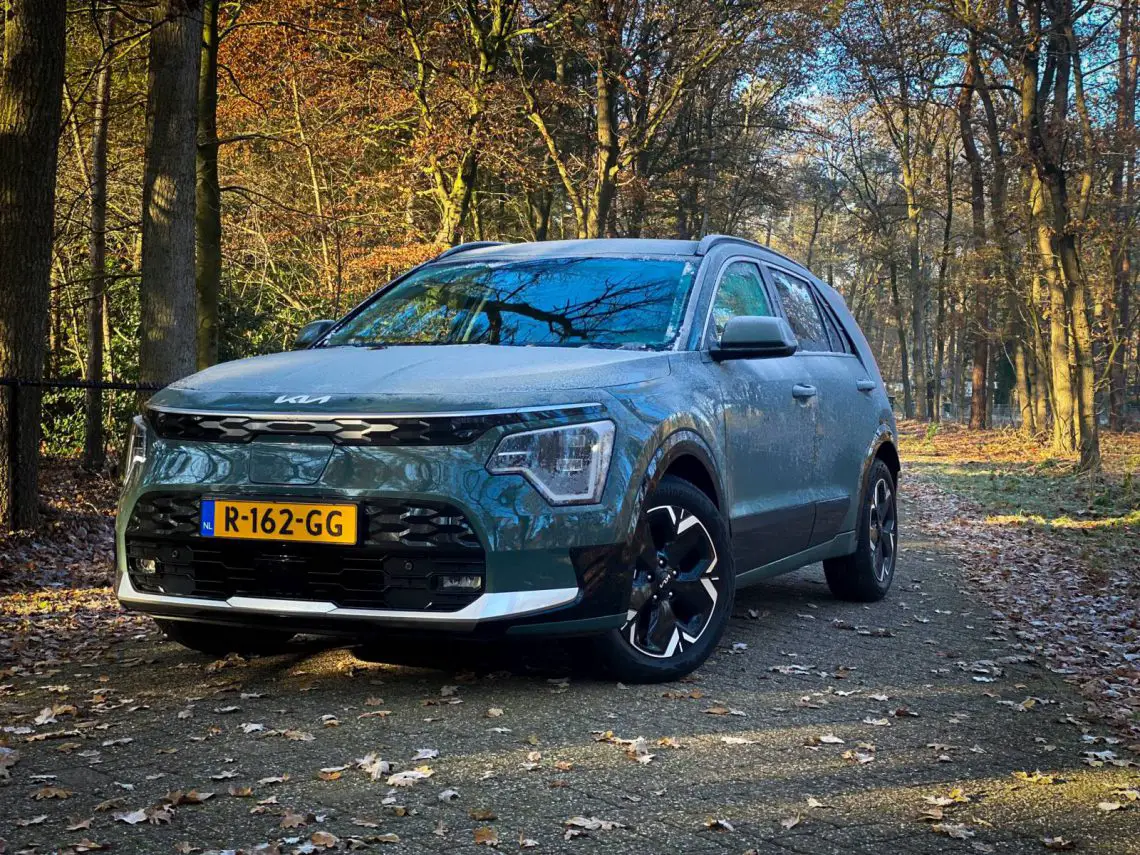
New Kia Niro
Now there is an all-new Niro. It has a more modern and sturdy appearance than its predecessor. As usual, the vehicle has the “tiger face” family face on the nose. Another striking element is the C-pillar, which is optionally finished in a contrasting color and accommodates the taillights. Thanks to the new, trendy look, Kia hopes to appeal to a younger audience. The previous Niro was a bit of an unremarkable appearance anyway.
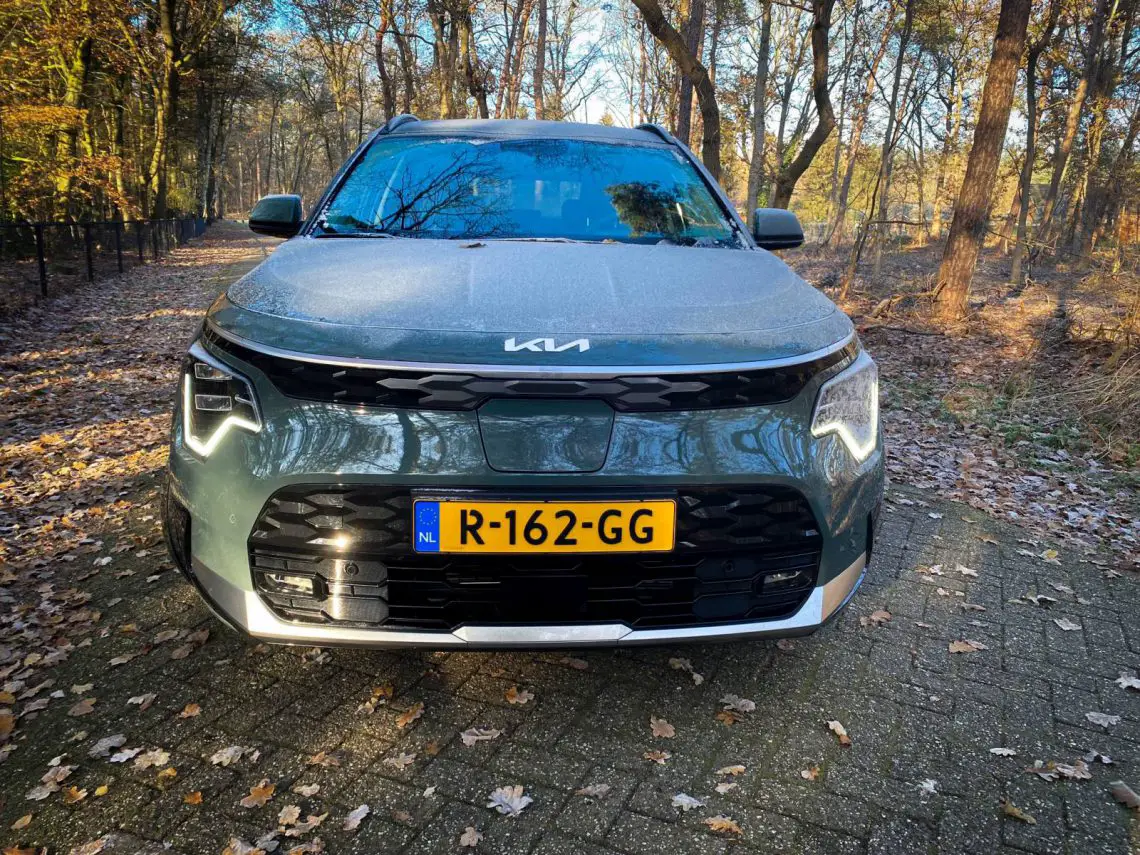
Dimensions
The new Niro EV is 4.42 meters long, 1.82 meters wide and 1.55 meters high. This makes it slightly larger than the e-Niro, though not much difference. In the back, you are well seated – the rear seat is sliding and heatable – and three children can fit side by side. Tablets and phones can be powered via two USB-C connectors, and there is even a domestic power outlet. Handy, if you also want to charge a laptop. If you’re short of an outlet, you can plug the Vehicle-to-Device (V2D) adapter into the Niro EV’s charging port, powering electrical devices directly from the car’s battery. Handy if you want to make a cup of coffee on the side of the road while on vacation.
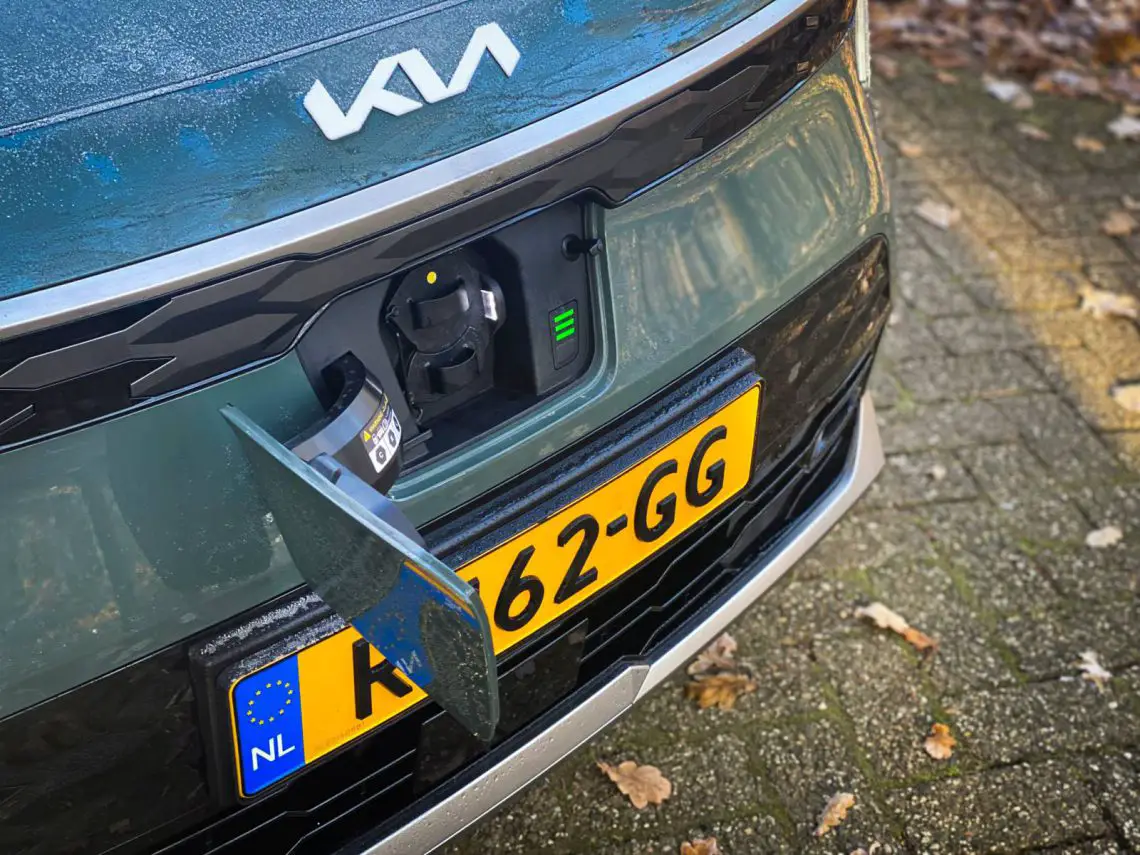
Luggage space Kia Niro EV
If you’re looking for lots of luggage space, you’re in the right place with the Niro EV. Of all the Niro variants, it offers the most space. 475 liters to be exact. The PHEV has only 348 liters of storage space in the rear and the HEV (hybrid) 451 liters. A Volkswagen ID.3 – a major competitor – does not exceed 385 liters. The rear seat can fold forward in two parts (60/40), giving you 1,392 liters.
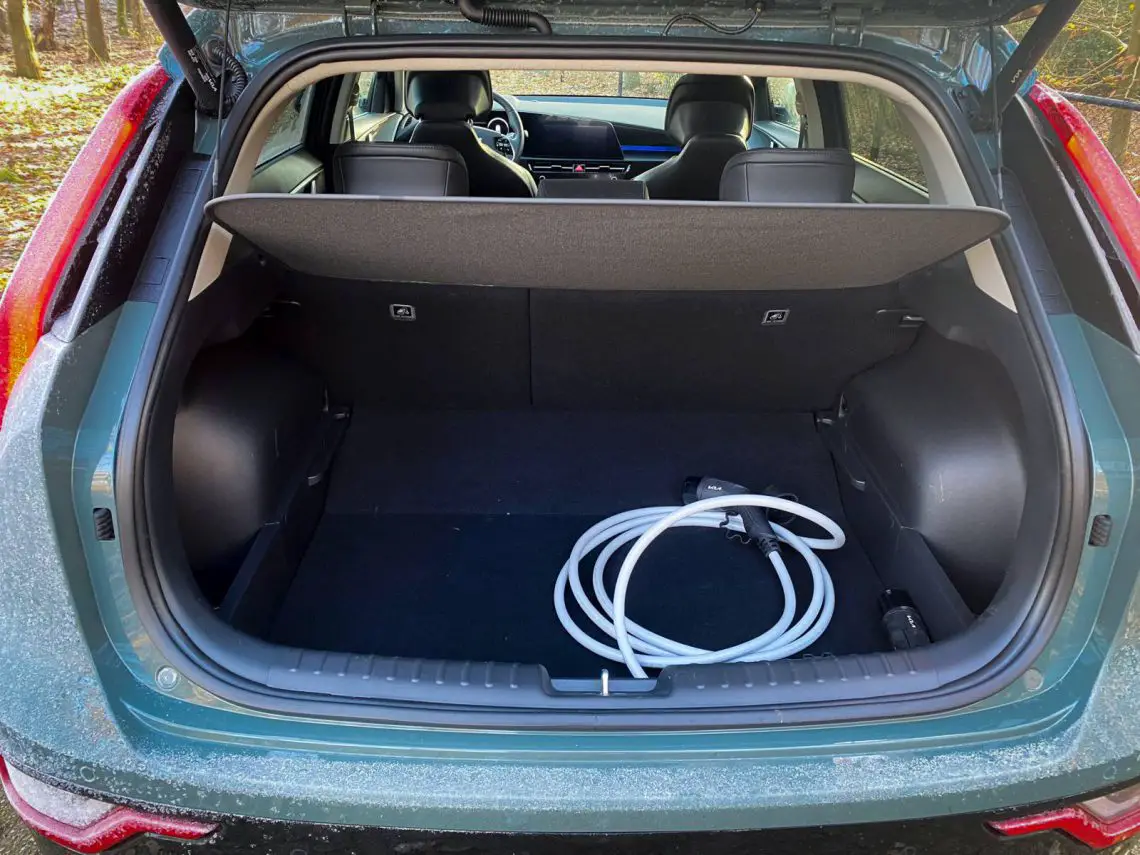
Frunk and towing weight
In addition, the Niro EV also has storage space under the hood. The “frunk” holds 20 liters. Not much, but enough for your charging cable or some small groceries. The towing weight is also impressive: 750 kilograms. Many electric models in this segment are allowed to tow only 500 kilograms or sometimes nothing at all.
Range
Under the skin, the new Niro has remained practically the same. As before, it is available with three different powertrains. It sits on a further development of the K2 platform and is equipped with a 64.8 kWh battery pack, familiar from the previous model. According to WLTP figures, the Niro EV can travel 460 kilometers on a full charge, which is only eight kilometers more than the e-Niro. While that difference is small – it would have been nice if it got 50 kilometers farther than its predecessor – it is still a tidy range in this price range.
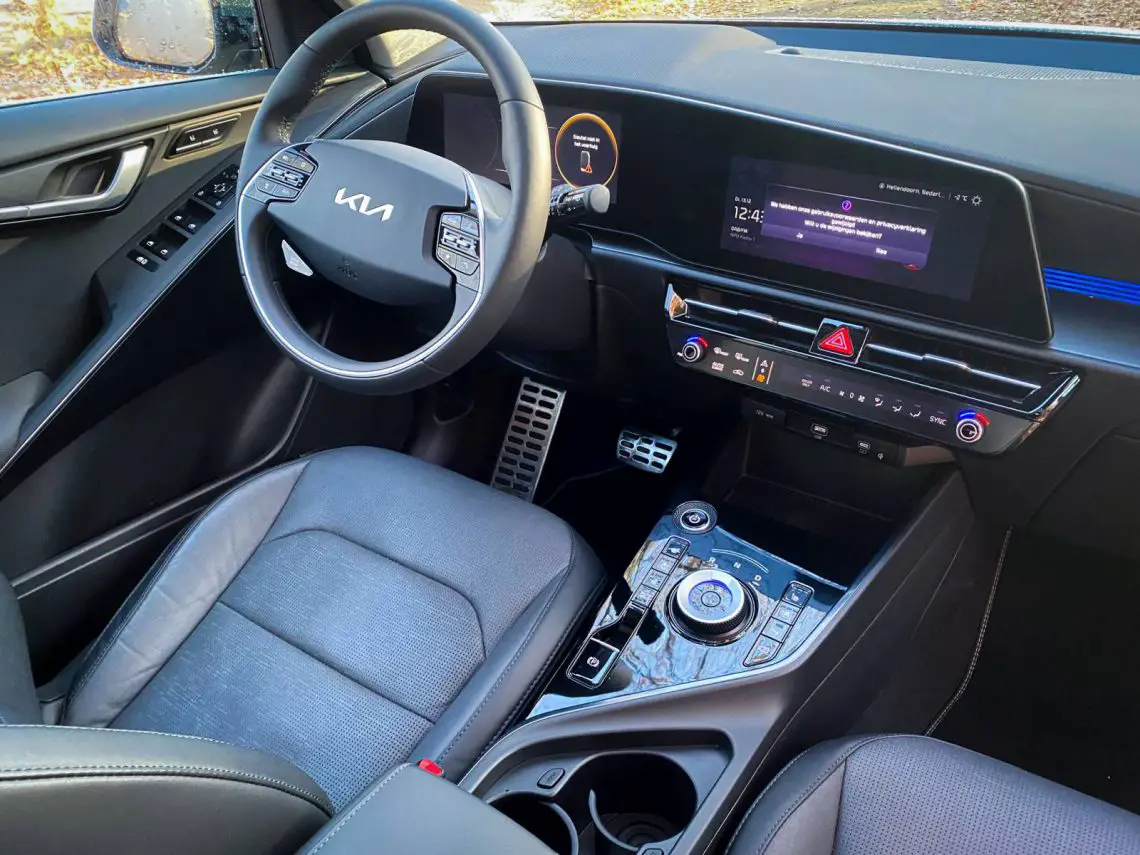
Practice
We tested the Niro EV in the coldest week of December. The mercury regularly drops well below freezing and there is a constant layer of ice on the car. We notice this in the range. That’s how it is with electric cars. On a fully charged battery we get about 250 highway miles. Sounds lousy, but it’s not. We used everything that eats electricity and has a heating element (seat, steering wheel, windows) during all our trips and unlike the government, we did not turn the heating down 2 degrees, but rather turned it up. So even in the worst conditions, a usable range remains.

Power
The Niro EV has as much power as its predecessor, with an electric motor delivering 204 hp and 255 Nm of torque. There are four driving modes: Eco, Normal, Sport and Snow. In Sport mode, the car gets off the road very smoothly. For the first 50 meters, you outpace many a car. The Korean has 0-100 km/h acceleration in 7.8 seconds and a top speed of 167 km/h.

load
At a fast charging station, it can have up to 72 kW of charging power, which is less than the charging power of the Kia EV6, which can have up to 240 kW. According to Kia, however, the Niro EV can hold peak charging power for a long time. Still, you should not be in a hurry to load. In three quarters of an hour, the 10-80% package is at the right charger. A Volkswagen ID.3 (124 kW) and MG4 Electric (135 kW) are ready at least 10 minutes earlier at a fast charger. In the Netherlands, the charging speed a car can achieve at home or at a public charging station is more important, and there the Niro EV can charge at 11 kW thanks to a three-phase onboard charging system. Nothing to complain about.
Prices
A Kia Niro EV starts at 44,795 euros. For this, you get the DynamicLine. We drove the most expensive version, the ExecutiveLine. For this version, you will pay a minimum of 50,395 euros. Want to know more about the new Kia Niro? We drove the Kia Niro Hybrid before:

